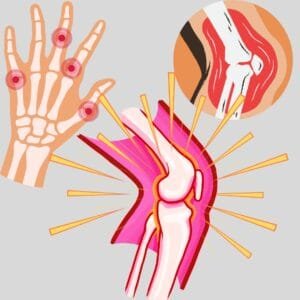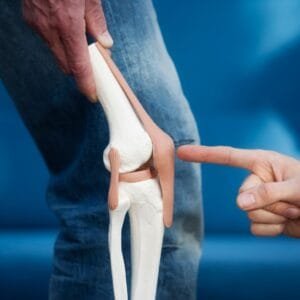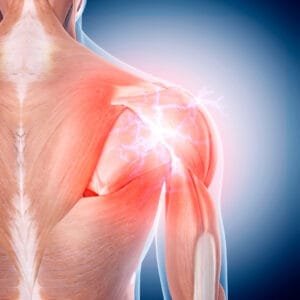Joint Pain: Causes, Symptoms, and Treatment
Joint pain, or arthralgia, is a common condition affecting people of all ages. It refers to discomfort, aches, or inflammation in one or more joints. While occasional joint pain may result from overuse or minor injuries, persistent or severe pain may indicate an underlying medical condition. Understanding the causes, symptoms, and treatments for joint pain is key to managing and alleviating discomfort effectively.



What is Joint Pain?
Joint pain is a symptom that can range from mild discomfort to debilitating pain. Joints are the connections between bones that provide mobility and support. Pain in the joints may result from inflammation, injury, infection, or chronic conditions like arthritis. It can affect any part of the body, including knees, shoulders, hips, hands, and spine.
Causes of Joint Pain
Joint pain can result from various causes, broadly categorized as injuries, inflammation, infections, or degenerative conditions:
1. Injuries
- Sprains and Strains:
- Overstretching or tearing of ligaments or muscles.
- Fractures or Dislocations:
- Trauma causing damage to bones and surrounding tissues.
- Overuse Injuries:
- Repetitive stress leading to conditions like tendinitis or bursitis.
2. Arthritis
- Osteoarthritis (OA):
- Caused by wear and tear of joint cartilage, common in older adults.
- Rheumatoid Arthritis (RA):
- An autoimmune condition where the immune system attacks joint tissues.
- Gout:
- Sudden, severe pain due to uric acid crystal buildup in joints.
3. Infections
- Septic Arthritis:
- Bacterial or fungal infections directly affecting a joint.
- Lyme Disease:
- A tick-borne infection causing joint pain and swelling.
4. Chronic Conditions
- Lupus:
- An autoimmune disorder causing joint inflammation.
- Fibromyalgia:
- Widespread pain, including in the joints, often accompanied by fatigue.
Symptoms of Joint Pain
The symptoms of joint pain can vary depending on its cause and severity. Common symptoms include:
Mild to Moderate Symptoms
- Aching or throbbing pain in one or more joints.
- Swelling or tenderness around the joint.
- Stiffness, especially after rest or in the morning.
- Difficulty moving the joint or reduced range of motion.
Severe Symptoms Requiring Medical Attention
- Sudden, intense pain (e.g., gout or injury).
- Joint deformity or inability to move the joint.
- Persistent swelling or redness.
- Fever or chills accompanying joint pain (may indicate infection).
Diagnosis of Joint Pain
Accurate diagnosis is essential to identify the underlying cause of joint pain. A healthcare provider may use:
1. Medical History and Physical Examination
- Evaluating the onset, location, and severity of pain.
- Assessing for swelling, redness, or deformity in joints.
2. Imaging Tests
- X-rays:
- Detect joint damage, fractures, or osteoarthritis.
- MRI or CT Scans:
- Provide detailed images of soft tissues, ligaments, and cartilage.
- Ultrasound:
- Visualizes inflammation in soft tissues and fluid in joints.
3. Lab Tests
- Blood Tests:
- Check for inflammation markers like CRP or rheumatoid factor (RF).
- Joint Fluid Analysis:
- Identifies infections, gout, or other conditions.
Treatment for Joint Pain
Joint pain treatment aims to alleviate symptoms, improve mobility, and address the root cause. Options include medications, physical therapy, and lifestyle changes.
1. Medications
- Pain Relievers:
- Acetaminophen or ibuprofen for mild to moderate pain.
- Anti-Inflammatory Drugs:
- NSAIDs like naproxen or diclofenac reduce swelling and pain.
- Corticosteroids:
- Injectable steroids like prednisone for severe inflammation.
- Disease-Modifying Anti-Rheumatic Drugs (DMARDs):
- For autoimmune conditions like RA (e.g., methotrexate).
- Colchicine:
- Used to treat and prevent gout flares.
2. Physical Therapy and Rehabilitation
- Stretching and Strengthening Exercises:
- Improve joint flexibility and strengthen surrounding muscles.
- Hot and Cold Therapy:
- Heat relaxes stiff joints, while cold reduces swelling.
- Assistive Devices:
- Braces or orthotics to support and protect joints.
3. Alternative Therapies
- Acupuncture:
- Reduces pain by stimulating specific pressure points.
- Massage Therapy:
- Eases tension and improves circulation around joints.
- Herbal Remedies:
- Turmeric and ginger have natural anti-inflammatory properties.
4. Surgical Interventions
- Arthroscopy:
- Minimally invasive procedure to repair joint damage.
- Joint Replacement Surgery:
- Replacing damaged joints with artificial ones, often for hips or knees.
Preventing Joint Pain
Preventive measures can reduce the risk of joint pain or minimize its impact:
1. Stay Active
- Regular exercise strengthens muscles and maintains joint flexibility.
- Low-impact activities like swimming or cycling are ideal for joint health.
2. Maintain a Healthy Weight
- Reduces strain on weight-bearing joints like knees and hips.
3. Protect Your Joints
- Use proper techniques when lifting heavy objects.
- Wear protective gear during physical activities or sports.
4. Eat a Balanced Diet
- Include anti-inflammatory foods like leafy greens, fatty fish, and nuts.
- Ensure adequate intake of calcium and vitamin D for bone health.
Complications of Untreated Joint Pain
If left unaddressed, joint pain can lead to complications such as:
- Reduced Mobility:
- Stiffness and pain may restrict daily activities.
- Joint Deformity:
- Prolonged inflammation can cause permanent joint damage.
- Chronic Pain:
- Persistent discomfort affecting mental and physical well-being.
- Dependency on Medications:
- Overuse of painkillers can lead to side effects or addiction.
FAQs about Joint Pain
1. What causes joint pain without swelling?
Joint pain without swelling can be due to overuse, wear and tear (osteoarthritis), or referred pain from other areas.
2. How can I relieve joint pain naturally?
Natural remedies include applying heat or cold packs, consuming anti-inflammatory foods, and staying active with low-impact exercises.
3. When should I see a doctor for joint pain?
Consult a doctor if joint pain persists for more than a week, worsens over time, or is accompanied by swelling, redness, or fever.
4. Can joint pain be a symptom of serious illness?
Yes, joint pain can indicate conditions like rheumatoid arthritis, lupus, or infections requiring immediate attention.
5. What are the best exercises for joint pain?
Gentle activities like yoga, swimming, and walking can improve joint flexibility and reduce pain.
Conclusion
Joint pain is a common condition that can significantly impact daily life if left untreated. Whether caused by injuries, inflammation, or chronic conditions like arthritis, joint pain can often be managed with the right combination of treatments, lifestyle changes, and preventive measures. If you experience persistent or severe joint pain, consult a healthcare provider for proper diagnosis and personalized care. With timely intervention, joint pain relief and improved mobility are achievable.
